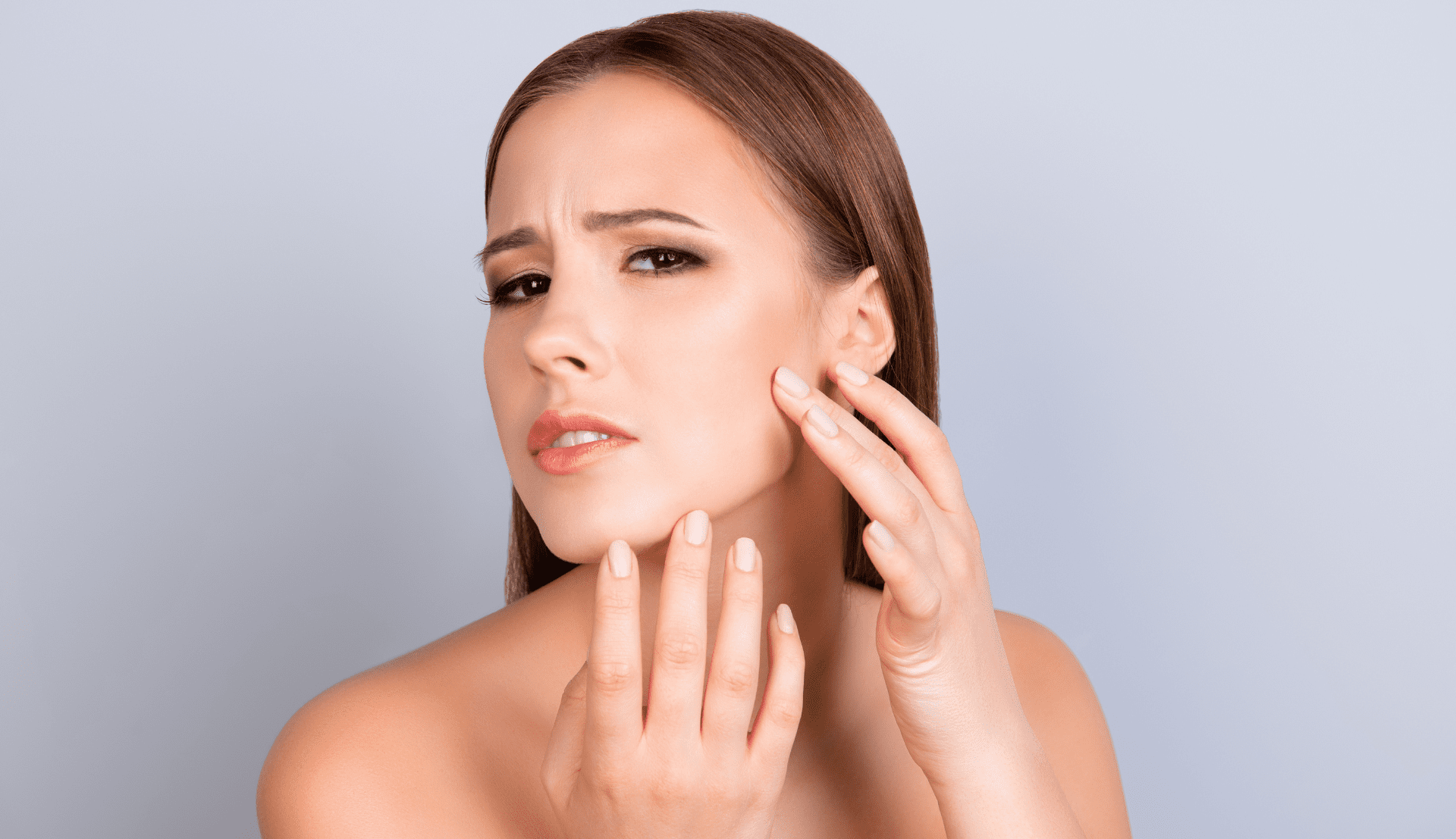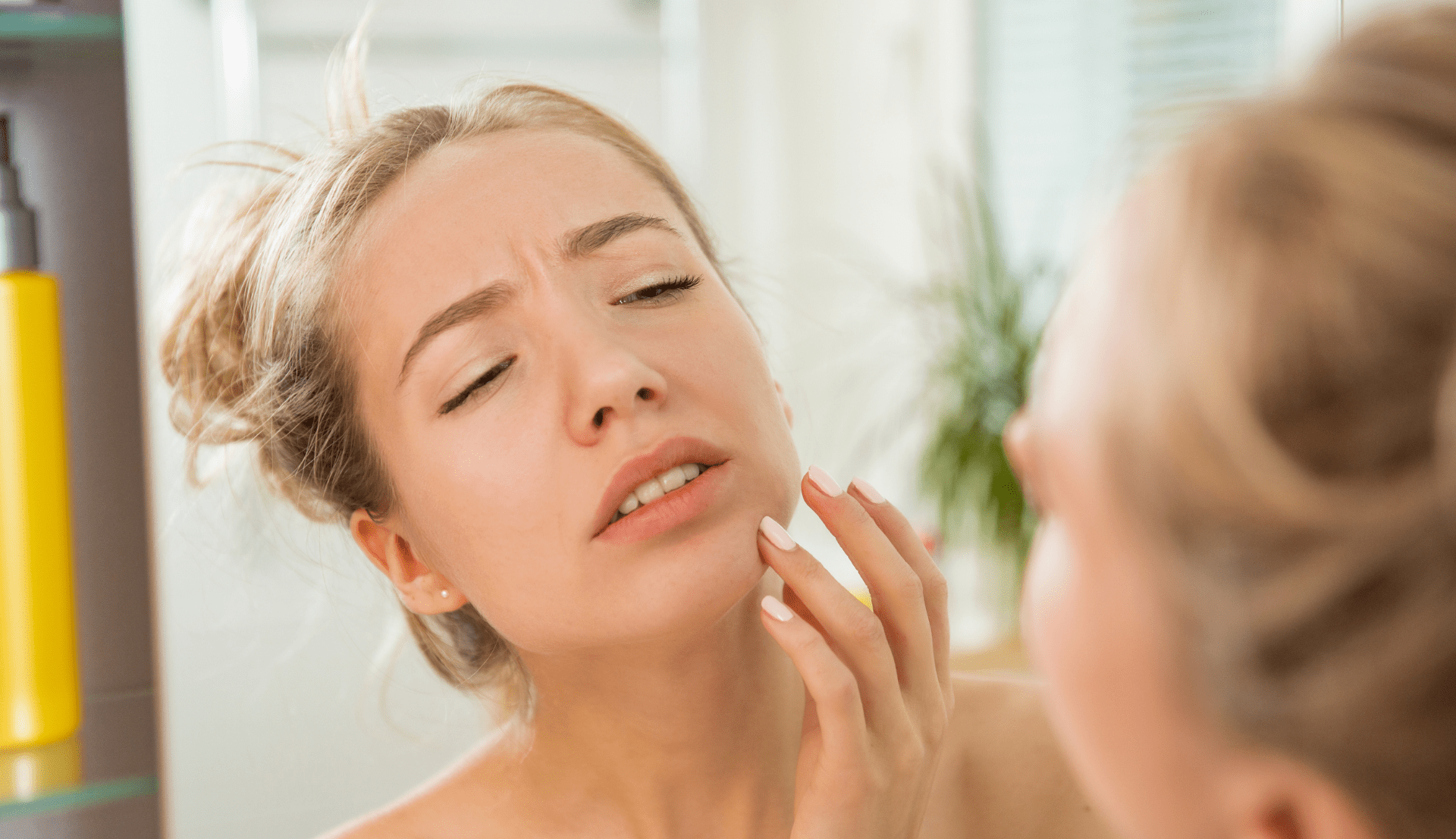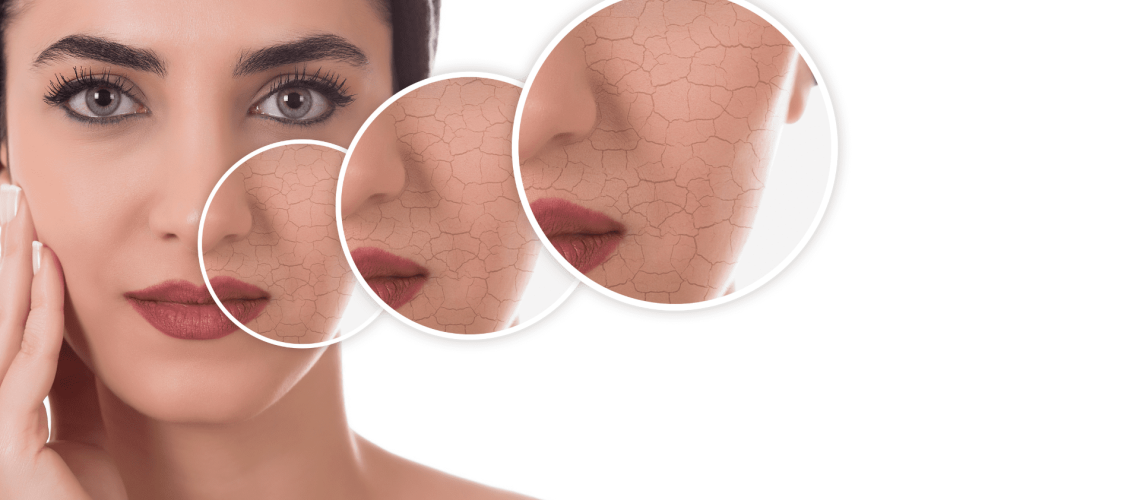Dry skin becomes rough due to lack of moisture. Dry skin is very common. The medical term for dry skin is xerosis. You can treat dry skin with a moisturizer at home. If dry skin persists or continues to recur, see a dermatologist. Dry skin is a condition in which the skin is dry due to lack of sufficient moisture. It’s usually not serious, but it can be frustrating. If you suffer from severe dry skin, you should consult your doctor.
Dry skin can be rough, itchy, flaky or scaly. Where these dry spots form varies from person to person. This is a common condition that affects people of all ages.
Dry skin, also known as xerosis or xeroderma, has many causes, including cold or dry weather, sun damage, harsh soaps, and excessive bathing.
Using Dermabiotecnica Gold body AHA as a simple personal care routine can eliminate this problem and restore suppleness to your skin.

Causes
Dry skin is caused by the loss of water from the outer layer of the skin. It can be caused by:
Excessive bathing or scrubbing. Long hot showers, baths, and scrubbing too hard can dry out your skin. Bathing several times a day can strip your skin of its natural oils.
Strong soaps and detergents. Many common soaps, cleansers and shampoos are formulated to remove oil, thus stripping the skin of moisture.
Surroundings. Lives in cold, windy conditions or low humidity climates. Central heating, wood stoves, space heaters, and fireplaces reduce humidity.
Other skin diseases. People with skin conditions such as neurodermatitis (eczema) and psoriasis often suffer from it.
Medical care. Some people have thickened skin after cancer treatment, dialysis, or taking certain drugs.
aging. As we age, our skin becomes thinner and produces less of the oil it needs to retain moisture.
What types of dry skin are there?
Dry skin types include:
Contact dermatitis:
Contact dermatitis occurs when something touches the skin and causes irritation or an allergic reaction. The skin becomes itchy, red, and may develop a rash. Examples include gem metals (nickel), cosmetics, cleaning agents, and pharmaceuticals.
eczema:
Eczema is a group of skin conditions that cause red, bumpy, and itchy patches of skin. In severe cases, the skin may crack and become susceptible to infection. This common skin condition can be exacerbated by irritants, allergens and stress.

Seborrheic dermatitis:
Dry skin on the scalp can be caused by a condition called dandruff in adults and cradle cap in infants. Seborrheic dermatitis can also cause dry, scaly patches of skin on the inner wrinkles of the face, chest, arms, legs, and groin. Rarely, the navel can also be affected. This type of dermatitis occurs when the body reacts to normal yeast growing on the skin.
Athlete’s foot:
Athlete’s foot is similar to dry skin on the feet, but it is caused by a fungus. When this fungus grows inside the body, it is called ringworm. People with athlete’s foot may have dry, scaly skin on the soles of their feet.
Dry skin treatment
Dry skin often responds well to lifestyle measures such as Using moisturizers and avoiding long hot showers or baths. If you have extremely dry skin, your doctor may recommend moisturizing products tailored to your needs.
If you have a severe skin condition, your doctor can treat it with a prescription cream or ointment. If you have dry, itchy skin, you can use lotions that contain hydrocortisone. If your skin is cracked, your doctor may prescribe a moist bandage to prevent infection.
lifestyle and Dry skin home therapy
The following actions will help keep your skin hydrated and healthy.
Wash your face gently at least twice a day. Twice a day, apply a gentle, non-foaming, alcohol-free cleanser to your face after you sweat. Products containing stearic acid (found in shea butter) or linoleic acid (found in argan oil, for example) help repair the skin. For sensitive skin, wash with cleanser at night and rinse with water the rest of the time.

While the skin is still damp, apply the topical medication you are using, wait a few minutes (see the medication package for details), then apply a moisturizer. If you use cosmetics, you should choose cream-based or oil-based products. Even on cloudy days, use a moisturizer and sunscreen or use a broad spectrum sunscreen with SPF 30 or higher. we suggest you Dermabiotecnica Gold sunscreen SPF50 Apply sunscreen liberally and reapply every two hours. Reapply more often if swimming or sweating.
Moisturize. Apply moisturizer several times a day, especially when your skin feels dry and when your skin is still damp after washing your hands or bathing. Ask your doctor about the pros and cons of different products for your skin and condition. It may be necessary to try several products until you find one that you like, that works for you, and that you use regularly.
Look for healing ingredients like urea, ceramides, fatty acids, glycerol (aka glycerine), shea butter, cocoa butter. Look for products that don’t cause acne (non-comedogenic), are allergen-free (hypoallergenic) and unscented. Avoid products containing drying sodium lauryl sulfate.
You can use the cream on your face and neck. Choose one that applies easily and leaves no visible residue. Acne-prone people should avoid using products containing petroleum jelly, cocoa butter, and coconut oil on their face. If your skin is very oily, try using sunscreen instead of moisturizer. For mature skin, using products containing antioxidants or alpha hydroxy acids can help prevent flaky skin. Moisturizers are often the basis for wrinkle creams with added retinoids, antioxidants, peptides and other ingredients.
If the skin on the outside of your face is very dry, you may want to use a heavier moisturizer (Eucerin, Cetaphil, etc.) or an oil like baby oil. Oils have a longer shelf life than lotions and prevent moisture from evaporating from the skin surface. Another option is petroleum jelly-based products (Vaseline, Aquafor, etc.). If it feels too greasy, use it only before bed or on small cracks in the skin. If your hands and feets are very dry, apply a generous amount of petroleum jelly before bed and wear plain cotton socks or gloves.
Use lukewarm water and limit bathing time. Long showers, baths and hot water strip your skin of its natural oils. Limit bathing to once a day for 5 to 10 minutes. Use lukewarm water, not hot water.
Use allergen-free moisturizing soap. Use a fragrance-free (hypoallergenic) moisturizing soap when washing your hands. Then apply moisturizer while your hands are still damp.

Use a soap-free cleansing cream or body wash in the shower or bath, and only use soap on areas where it is needed, such as the back of the neck, Armpits, and groin. Avoid loofahs and pumice stones. Rinse thoroughly and pat dry. Use a humidifier. Hot, bad indoor air can dry out sensitive skin and make itching and flaking worse. A portable humidifier or a humidifier connected to a furnace adds moisture to the air in your home.
Choose fabrics that are gentle on your skin. Natural fibers like cotton allow the skin to breathe. Although wool is a natural material, it can irritate even healthy skin.
When washing, use detergents that are free of dyes and fragrances as they can irritate the skin.
Relieves itching. If dry skin is causing itching, apply a clean, cool, damp cloth to the affected area. You can also apply an anti-itch cream or ointment containing at least 1% hydrocortisone.


